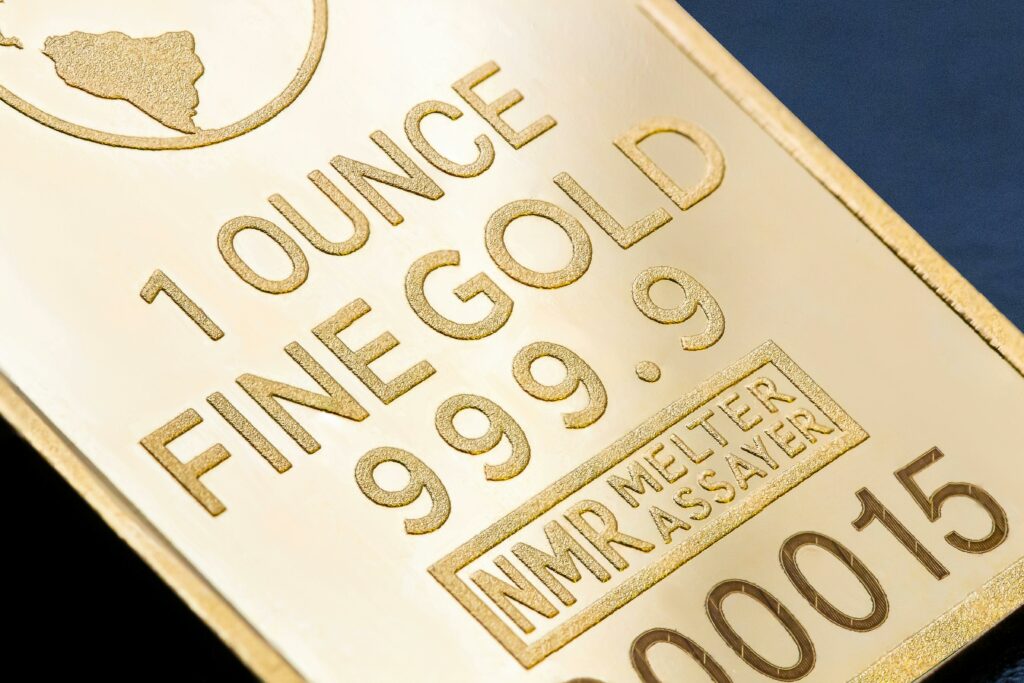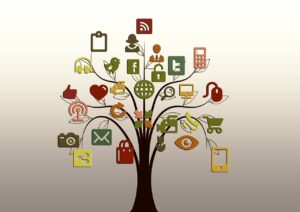A Comprehensive Guide to Unplugging and Recharging

In today’s hyper-connected world, technology is integral to our daily lives. From smartphones and laptops to tablets and smartwatches, we are constantly surrounded by screens. While these devices have made our lives more convenient, they have also created a new kind of stress: digital overload. This is where the concept of a digital detox comes into play. In this blog post, we’ll explore what a digital detox is, why it’s important, and how you can successfully implement one in your life. Whether you’re feeling overwhelmed by technology or simply want to improve your well-being, this guide will provide you with the tools and insights you need to take control of your digital habits.
Understanding Digital Overload: The Modern Dilemma
What is Digital Overload?
Digital overload occurs when we are exposed to an excessive amount of digital information and stimuli. This can include endless emails, social media notifications, news updates, and the constant pressure to stay connected. Over time, this bombardment of information can lead to mental fatigue, stress, and even physical health issues like eye strain and poor posture. The problem is compounded by the fact that many of us feel compelled to be “always on,” responding to messages and updates at all hours of the day.
Signs You Need a Digital Detox
How do you know if you’re experiencing digital overload? Here are some common signs that it might be time to unplug:
- Anxiety Without Your Phone: Do you feel uneasy or anxious when you don’t have your phone nearby? This could be a sign of digital dependency.
- Compulsive Checking: Are you constantly checking your phone for notifications, even when you know there’s nothing important?
- Difficulty Focusing: Do you find it hard to concentrate on tasks because you’re distracted by your devices?
- Physical Discomfort: Are you experiencing headaches, eye strain, or neck pain from prolonged screen time?
- Neglecting Relationships: Are you spending more time on your devices than with your loved ones?
If any of these signs resonate with you, it might be time to consider a digital detox.
What is a Digital Detox? Breaking It Down
The Basics of a Digital Detox
A digital detox is a period of time during which you intentionally reduce or eliminate your use of digital devices. This includes smartphones, computers, tablets, and even televisions. The goal is to create space for mental clarity, reduce stress, and reconnect with the physical world. A digital detox doesn’t have to mean going completely offline; it can also involve setting boundaries, such as limiting screen time or designating specific times of the day as tech-free.
Why is a Digital Detox Important?
The importance of a digital detox cannot be overstated. In a world where we are constantly bombarded with information, taking a step back is essential for our mental and physical health. Excessive screen time has been linked to a host of issues, including poor sleep, increased stress levels, and even depression. By disconnecting from technology, even for a short period, you give your brain a chance to rest and recharge. This can lead to improved focus, better sleep, and a greater sense of well-being.
The Benefits of a Digital Detox: Why It’s Worth It
Improved Mental Health
One of the most significant benefits of a digital detox is its positive impact on mental health. Constant exposure to screens and digital information can lead to feelings of anxiety and overwhelm. By taking a break, you allow your mind to relax and reset. Many people report feeling calmer, more focused, and less stressed after a digital detox.
Better Sleep
The blue light emitted by screens can interfere with your body’s production of melatonin, the hormone responsible for regulating sleep. This can make it harder to fall asleep and stay asleep. By reducing screen time, especially in the hours leading up to bedtime, you can improve the quality of your sleep. Better sleep, in turn, leads to increased energy levels and improved overall health.
Stronger Relationships
Spending too much time on devices can take a toll on your relationships. When you’re constantly checking your phone or scrolling through social media, you’re not fully present with the people around you. A digital detox allows you to reconnect with loved ones, fostering deeper conversations and more meaningful interactions.
Increased Productivity
Digital distractions can significantly impact your ability to focus and get things done. By eliminating or reducing these distractions, you can boost your productivity. Whether you’re working on a project, studying, or simply trying to complete household chores, a digital detox can help you stay on task and accomplish more in less time.
Enhanced Creativity
When you’re constantly consuming information online, it can be difficult to find the mental space to think creatively. A digital detox gives you the opportunity to step away from the noise and tap into your own thoughts and ideas. Many people find that they are more creative and inspired after taking a break from screens.
How to Start a Digital Detox: A Step-by-Step Guide

Set Clear Goals
Before embarking on a digital detox, it’s important to define what you hope to achieve. Are you looking to reduce stress? Improve your sleep? Spend more time with family? Having clear goals will help you stay motivated and focused throughout the process.
Create a Plan
A successful digital detox requires careful planning. Start by assessing your current screen time habits. How much time do you spend on your devices each day? What activities are most draining or distracting? Once you have a clear understanding of your habits, you can create a plan to reduce or eliminate them. For example, you might decide to avoid screens during meals or set a specific time each day to check emails.
Turn Off Notifications
Notifications are one of the biggest sources of digital distraction. They constantly pull your attention away from what you’re doing and make it difficult to focus. To reduce this distraction, consider turning off non-essential notifications. This includes social media alerts, email notifications, and app updates. By doing so, you’ll be able to check your devices on your own terms rather than being constantly interrupted.
Designate Screen-Free Zones
Creating screen-free zones in your home can help you establish healthy boundaries with technology. For example, you might decide to keep your bedroom or dining room free of screens. This will encourage you to engage in other activities, such as reading, cooking, or spending time with family.
Find Alternatives
One of the keys to a successful digital detox is finding alternative activities to replace screen time. This could include reading a book, going for a walk, practicing a hobby, or spending time with loved ones. By filling your time with meaningful activities, you’ll be less likely to feel the urge to reach for your phone.
Tips for a Successful Digital Detox
Start Small
If the idea of a full-day or weekend-long digital detox feels overwhelming, start small. Begin by setting aside just one hour each day to be screen-free. As you become more comfortable, gradually increase the amount of time you spend offline.
Involve Friends and Family
A digital detox is often easier when you have support from others. Consider inviting friends or family members to join you in your detox. Not only will this provide you with accountability, but it will also give you the opportunity to connect with loved ones in a meaningful way.
Track Your Progress
Keeping a journal can be a helpful way to track your progress during a digital detox. Write down how you feel before and after your detox, as well as any challenges you encounter. This will help you identify patterns and make adjustments as needed.
Be Patient
Breaking old habits and forming new ones takes time. If you slip up during your digital detox, don’t be too hard on yourself. Instead, focus on the progress you’ve made and recommit to your goals.
Challenges of a Digital Detox and How to Overcome Them

Fear of Missing Out (FOMO)
One of the biggest challenges of a digital detox is the fear of missing out. Many people worry that they’ll miss important updates or events if they disconnect. To overcome this, remind yourself that it’s okay to take a break. The world will still be there when you return, and you’ll be better equipped to handle it after some time away.
Work Obligations
For many people, work requires constant connectivity. If this is the case for you, a full digital detox might not be feasible. Instead, consider setting boundaries around your work-related screen time. For example, you might decide to avoid checking emails after a certain time in the evening or on weekends.
Social Pressure
Friends and family members might not understand why you’re doing a digital detox, and they may even pressure you to stay connected. If this happens, explain your reasons for wanting to unplug. You might be surprised to find that others are interested in joining you.
Digital Detox Ideas to Get You Started
Unplug for a Day
Choose one day a week to go completely offline. Use this time to relax, recharge, and engage in activities that bring you joy. You might spend the day reading, hiking, or simply enjoying the company of loved ones.
Take a Social Media Break
Social media can be a major source of stress and distraction. Consider taking a break from social media for a few days or even a week. During this time, focus on connecting with people in person or through other means.
Try a Tech-Free Weekend
Spend an entire weekend without screens. Use this time to reconnect with nature, explore new hobbies, or simply relax. You’ll likely find that you feel more refreshed and energized after a tech-free weekend.
Create a Nighttime Routine
Avoid screens for at least an hour before bed. Instead, engage in relaxing activities like reading, meditating, or journaling. This will help you wind down and prepare for a restful night’s sleep.
Long-Term Strategies for Digital Wellness
Set Daily Screen Time Limits
Many smartphones and devices now come with built-in tools to help you monitor and limit your screen time. Use these tools to set daily limits for yourself. This will help you stay mindful of your usage and avoid falling back into old habits.
Practice Mindfulness
Mindfulness is the practice of being fully present in the moment. By incorporating mindfulness into your daily routine, you can reduce the urge to constantly check your devices. Try starting your day with a few minutes of meditation or deep breathing exercises.
Prioritize Face-to-Face Interactions
In a world dominated by digital communication, it’s easy to forget the value of face-to-face interactions. Make an effort to spend more time with people in person. Whether it’s having a coffee with a friend or attending a family gathering, these interactions can help you feel more connected and fulfilled.
Schedule Regular Detoxes
A digital detox doesn’t have to be a one-time event. Consider making it a regular part of your routine. Whether it’s a weekly tech-free day or a monthly weekend detox, regular breaks from screens can help you maintain a healthy balance.
Real-Life Success Stories: Inspiration for Your Digital Detox Journey
Sarah’s Story
Sarah, a 32-year-old marketing professional, used to spend hours scrolling through social media every day. She felt constantly stressed and disconnected from her family. After a week-long digital detox, she noticed a significant improvement in her mood and relationships. She now sets aside one day each weekend to unplug and spend quality time with her loved ones.
John’s Story
John, a 45-year-old teacher, struggled with sleep due to late-night screen time. He decided to avoid screens for at least an hour before bed and replaced his evening TV time with reading. Within days, he noticed a dramatic improvement in his sleep quality and energy levels.
Emma’s Story
Emma, a 28-year-old graphic designer, felt overwhelmed by constant emails and notifications. She started turning off her phone during meals and designating specific times to check emails. This small change made a big difference in her stress levels and overall well-being.
Final Thoughts: Embrace the Power of a Digital Detox

In a world where technology is constantly vying for our attention, a digital detox is more important than ever. By taking a step back from screens, you can reduce stress, improve your mental and physical health, and reconnect with the people and activities that truly matter. Whether you start with a small change or commit to a full detox, the benefits are well worth the effort. So, are you ready to unplug and recharge? Your journey to digital wellness starts today.




